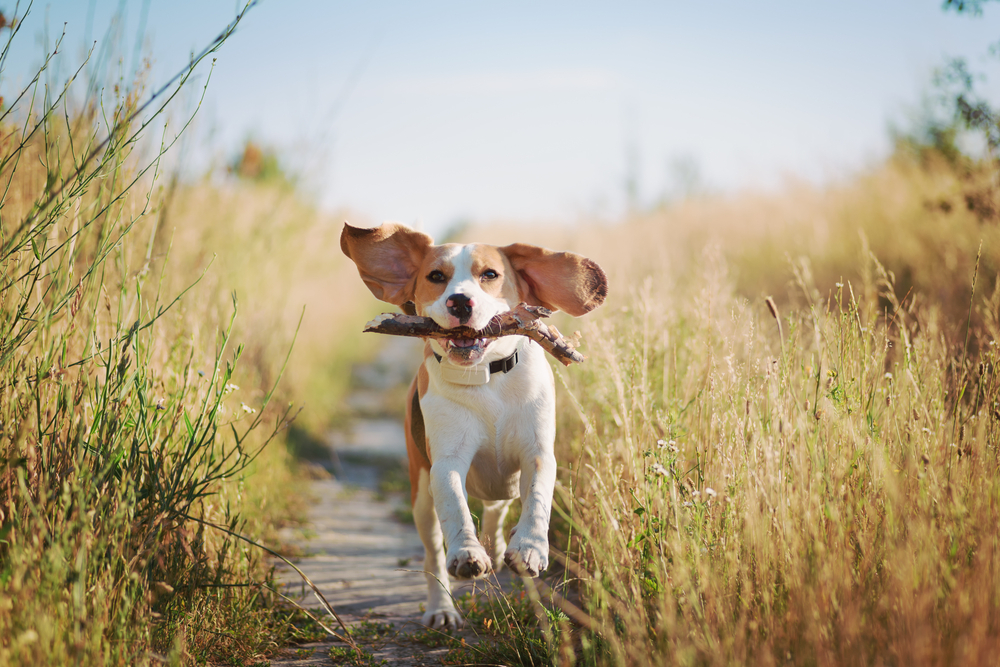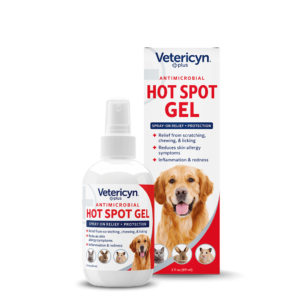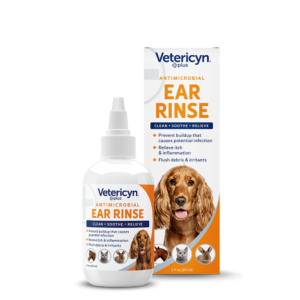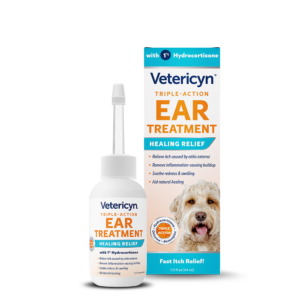Your dog’s ears: just the right shape to frame their sweet face, flop as they run, and perk up at the jingle of a leash. But one night, as you kick back together on the couch, you reach down to scratch your pup’s ears…and they yelp and pull away.
Normally, they love their scratchies—what’s going on? You look closer and notice red swollen patches, maybe with a topping of crusty ooze.
Needless to say, it’s fair to feel alarmed. Especially if you’ve never encountered this issue before. Keep reading to learn what can make a dog’s ear swollen and puffy and explore some remedies to get those ears back to their usual, adorable shape.
Dog Ears: Red Flags to Watch For
A swollen, puffed-up appearance is usually the dead giveaway that something’s amiss with your dog’s ears. But ear troubles come with a host of other symptoms. Tracking them will help you pinpoint the problem and treat it effectively. Keep your eyes peeled for:
- Redness – Inflammation leads to angry, red skin. If you spot cherry-colored patches on your dog’s ear, their immune system clearly has some beef to settle.
- Discharge – Dark-colored ear discharge or crusty trails indicate the body’s attempt to banish an invader.
- Nasty odor – During snuggle time, an unpleasant stench may trouble your nose. Stinky ears: definitely a warning sign.
- Head shaking – When faced with ear irritation, your dog will take a tip from Taylor Swift and attempt to shake it off. Unfortunately, this does more harm than good, and can even cause greater ear trauma.
- Relentless scratching – Similar to head shaking, you may spot your pup pawing ceaselessly at their ears.
All these symptoms need to be addressed, whether alone or in combination. Understanding the root cause of these signs is the first step toward effective dog care.
Swollen and Puffy Ears: Common Causes
Dog ears, especially floppy ones, easily play host to bacteria and pesky hitchhikers. Their ear canals feature a right-angled shape (picture an “L”) with a sharp fork at the bottom.1 As you might imagine, moisture and debris tend to pool at the bend—and problems ensue.
Floppy ears, which trap heat and damp, also offer an ideal breeding ground for fungi and microbes.
While this structure underlies most problems, there are several distinct causes to note. Learn to recognize them, and you’ll know precisely how to send them packing.
Allergies
Humans aren’t the only ones who deal with seasonal allergies. Airborne irritants can affect canines, too. Pups can also experience food sensitivities.
While people tend to struggle with the sniffles during pollen season, dogs’ allergies usually produce skin issues.2 Given its sensitivity, ear skin often suffers the most when spring has sprung. This kind of allergic reaction can cause discomfort and swelling in dogs’ ears.
In addition to ear irritation, watch for:
- Dry skin
- Runny nose
- Watery eyes
- Licking or gnawing at fur
When ear swelling appears alongside these other symptoms, especially during the general allergy season, you can bet your pup is waging war against some pesky pollen.
Ear Infections
Remember that L-shaped ear canal? Well, here’s where it really causes distress. Wax buildup, trapped moisture, or foreign debris can all kickstart a painful, itchy problem that produces swollen and puffy ears.
Since dog ear infection symptoms overlap with other conditions, it’s important to recall your pup’s history. Ask yourself if they’ve recently3:
- Taken a bath or gone swimming – This offers a prime opportunity for moisture to seep inside the ear canal.
- Switched diets – Sudden dietary changes can knock a pup’s immune system off-kilter.
- Had their ear hair groomed – Long, scraggly ear hair provides a handy stepping stone for parasites and bacteria to storm the ear.
If you answer “yes” to any of these questions and notice swollen and puffy ears, your pup likely has an ear infection. Swift attention and using high-quality pet ear care products can help bring quick relief.

Aural Hematomas
These masses look like someone’s inflated a balloon beneath your pup’s ear skin—and they can be quite itchy and painful. Aural hematomas often piggyback on allergies or infections, resulting from excessive head shaking.4
Countless tiny veins run under the thin skin that encases your dog’s ear. With the repeated trauma of head shaking, these veins can burst and leave blood pooled between the inner cartilage and outer skin layer. As it accumulates, the area grows puffy and irritated.
Knowing how to treat a dog ear hematoma at home is the first step in managing this condition. While you can relieve some mild hematomas at home by using cold compresses or a dog cone (to guard against pawing and shaking), most hematomas require professional attention. For a fierce swelling that doesn’t improve, schedule a vet appointment.
Ear Mites
Ear mites are small, spider-like creatures that invade the ear and feed on blood and tissue. Sounds like the stuff of nightmares, right?
Unfortunately, dog ear mites are all too real. They climb aboard as your pup barrels through underbrush or tall grass and quickly set up shop, hopping easily from dog to dog. These infestations can cause ear irritation, leading to swelling and fluid buildup.
While head shaking and discharge accompany a mite invasion, you can often pinpoint their presence by scanning ear residue for tiny white spots (the dreaded mites).5
If you suspect your dog’s swollen and puffy ears stem from a mite invasion, bring them to the vet. They’ll perform an exam to confirm ear mites are indeed to blame. They’ll also prescribe one of several topical creams or drops to vanquish the mites.
Other Possible Irritants
While the issues listed so far represent the biggest risks to your pup’s ear health, a few other troubles can also produce swollen ears. These include:
- Bug bites – Mites aren’t the only insect invaders that upset the ear. Critters like ticks and fleas can also leave itchy, aggravating bites that invite incessant scratching (and the inevitable irritation). These bites can cause dog ear issues that become hard to ignore.
- Lesions – Many dogs love to play hard. And that’s stupendous! But extra-boisterous pooches run a higher risk of collisions, scratches, and chafing. Sometimes, minor ear scrapes can become infected and cause dog ear swelling or puffiness.
- Foreign objects – The body has a built-in “no-vacancy” policy when it comes to objects like seeds, pollen, or twigs. If debris stumbles in, the ear will do its darndest to expel it, typically leading to inflammation and fluid accumulation.
While this list can feel overwhelming, it’s important to remember that all of these issues have solutions. Determining the right one starts with a visit to your friendly neighborhood vet.
What to Expect at the Vet
While your furry friend may feel apprehensive about visiting the land of white coats, there’s no reason you should feel anxious. For an ear issue, vet appointments usually include:
- An intake assessment – The vet staff will record the details of your pup’s health history and their current symptoms.
- An examination – Your vet will use an instrument called an otoscope6 to scour the inner ear, outer ear, and eardrum for issues.
- Further testing (if needed) – If an initial inspection proves inconclusive, your vet may order detailed testing or swabbing to pinpoint the problem.
- A treatment plan – Depending on their findings, the vet will recommend a treatment path. This could include in-office ear cleaning, medicated drops, or surgery.
Sometimes, your poor pooch will be in too much pain for close inspection. When this happens, your vet may send you home with some oral steroids to reduce swelling and discomfort enough to allow for an exam.
Typically, a vet visit or two will set things right. Since the experience sets many dogs on edge, be sure to reward them with treats for good behavior. Soothe them with calming words, and give them time to acclimate to their environment before the exam.

When Is a Swollen Dog Ear an Emergency?
Most puffy ears can wait for a regular vet visit, but some red flags require urgent care. Skip the wait-and-see approach and head to the emergency vet if you notice:
- Sudden extreme swelling that balloons rapidly
- Constant crying or whining due to pain
- Signs of systemic illness—fever, lethargy, or loss of appetite
- Bleeding from the ear that won’t stop
- Loss of balance or coordination
These could signal a deeper infection, hematoma rupture, or something more serious like a neurological issue. In these cases, every hour counts.
Breeds More Prone to Ear Issues
Some pups are simply more ear-challenged than others, thanks to their anatomy or genetic makeup. If your dog fits one of the following categories, you’ll want to be especially proactive:
- Floppy-eared breeds like Cocker Spaniels, Basset Hounds, and Golden Retrievers
- Hairy-eared breeds such as Poodles and Schnauzers
- Water lovers like Labradors and Newfoundlands
- Allergy-prone pups like Bulldogs and West Highland White Terriers
For these breeds, ear maintenance isn’t just occasional—it’s a lifestyle. Routine checks and cleanings can spare you both a lot of discomfort down the line.
How to Prevent Ear Troubles for Dogs
Swollen ears can affect any dog, so don’t feel guilty if it happens! Luckily, there’s plenty you can do to keep your dog’s ears healthy:
- Clean ears often – Spotless ears leave little room for bacteria. Use a high-quality cleanser like the Vetericyn Antimicrobial Ear Rinse to irrigate the ear canal and send debris packing. Aim for ear cleaning once a month.
- Manage allergies – Allergies can evade even the best defenses. But that doesn’t mean you have to let them take over. Soothe symptoms with the Vetericyn Triple Action Ear Treatment, infused with 1% hydrocortisone for serious itch relief.
- Keep ears dry – When it comes to ear troubles, make moisture public enemy number one. Thoroughly towel dry after your pup goes swimming or takes a bath. Insert cotton balls in the outer ear for extra protection.
- Tend to injuries right away – Regularly inspect your pup’s ears for any nicks or cuts when they return from play. If anything catches your eye, clean and disinfect it ASAP. The sooner you address lesions, the better.
By staying on top of cleanings and allergies, you can fend off swollen, puffy ears and keep your pup in the jovial spirits you know and love.
Vetericyn: A Dog’s Best Friend
As a dog owner, you’re the lucky recipient of endless puppy-fueled joy. Obviously, you want the best for your canine companion—and preventing swollen ears tops the list.
Luckily, Vetericyn offers the works when it comes to ear care and radiant pet health. Our Hot Spot Antimicrobial Hydrogel makes treating ouchy skin sores a breeze. Plus, our expert-formulated ALL-IN-1 dog supplements provide the full gamut of nutrients for a shiny coat and buoyant energy.
Treat your pup to Vetericyn’s top-quality pet wellness, and enjoy countless happy years together. Discover our pet care products today!
 Reviewed by C. Scott Van Winkle
Reviewed by C. Scott Van Winkle
Scott has been with Innovacyn for the past 11 years and has been working within the Burlingame portfolio of companies for the past 23 years. Scott brings a diverse background to Innovacyn. With an upbringing as the 5th generation on his families cattle ranch, Scott has a passion for animal health and the continuous improvement surrounding agricultural practices. Scott earned marketing and business management degrees from the University of Idaho and holds an Executive MBA from Pepperdine University.
Sources:
- Washington State University College of Veterinary Medicine. Examining and medicating the ears of a dog. https://hospital.vetmed.wsu.edu/2022/01/04/examining-and-medicating-the-ears-of-a-dog/
- VCA Animal Hospitals. Allergies in Dogs. https://vcahospitals.com/know-your-pet/allergy-general-in-dogs
- American Kennel Club. Dog Ear Infections: Symptoms, Causes, Treatment, and Prevention. https://www.akc.org/expert-advice/health/dog-ear-infections/
- American Kennel Club. Ear Hematoma in Dogs: Signs, Symptoms, Treatments. https://www.akc.org/expert-advice/health/ear-hematoma-in-dogs/
- VCA Animal Hospitals. Ear Mites in Cats and Dogs. https://vcahospitals.com/know-your-pet/ear-mites-otodectes-in-cats-and-dogs
- Vet Ovation. How Does the Veterinary Video Otoscope Work? https://vetovation.com/how-does-the-veterinary-video-otoscope-system-work/?srsltid=AfmBOoqt9HmvidV9Jj2WBU9bdg1LKgPE1BMKW8-GREaAOwAgIFeV4RDH


